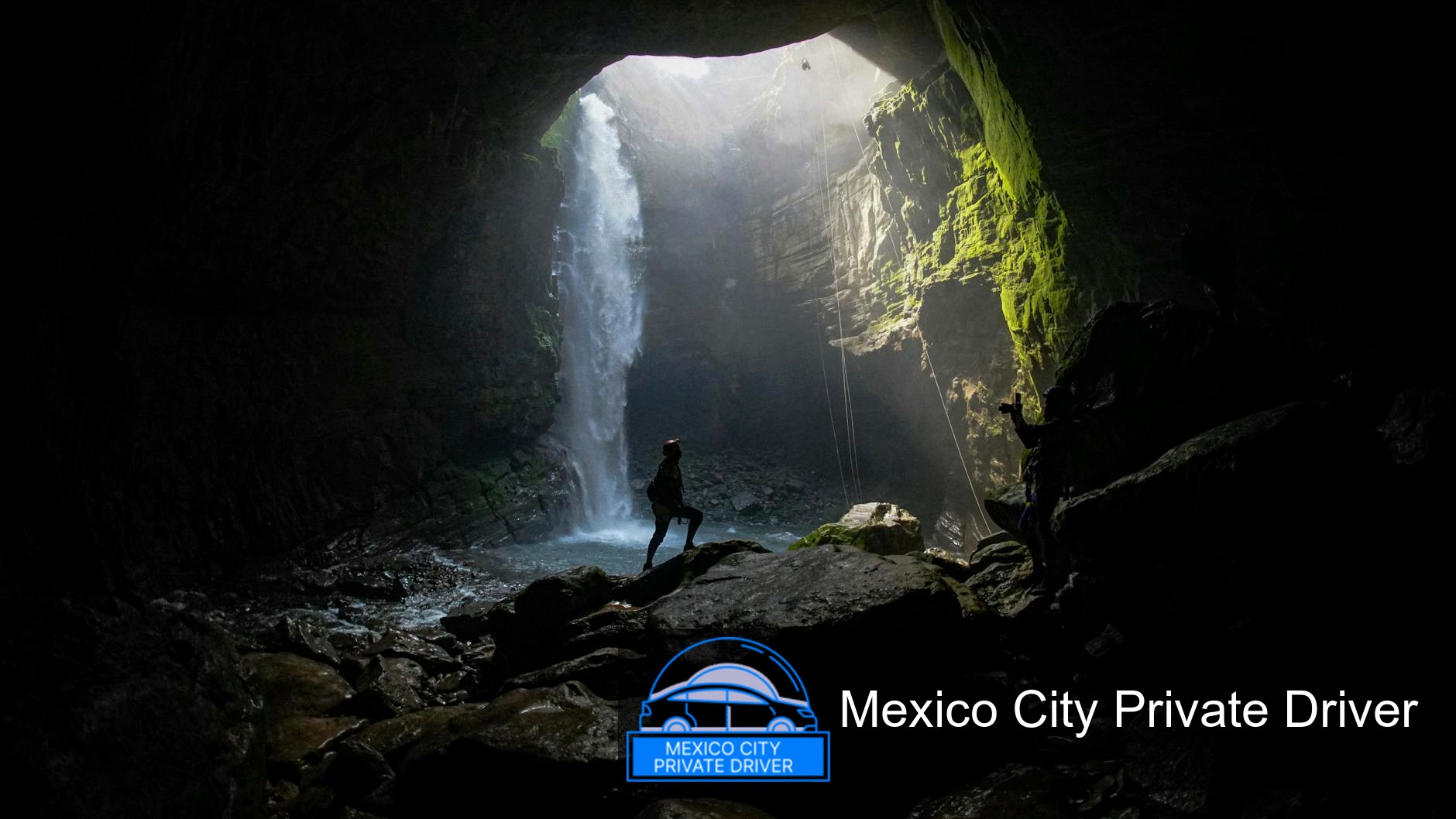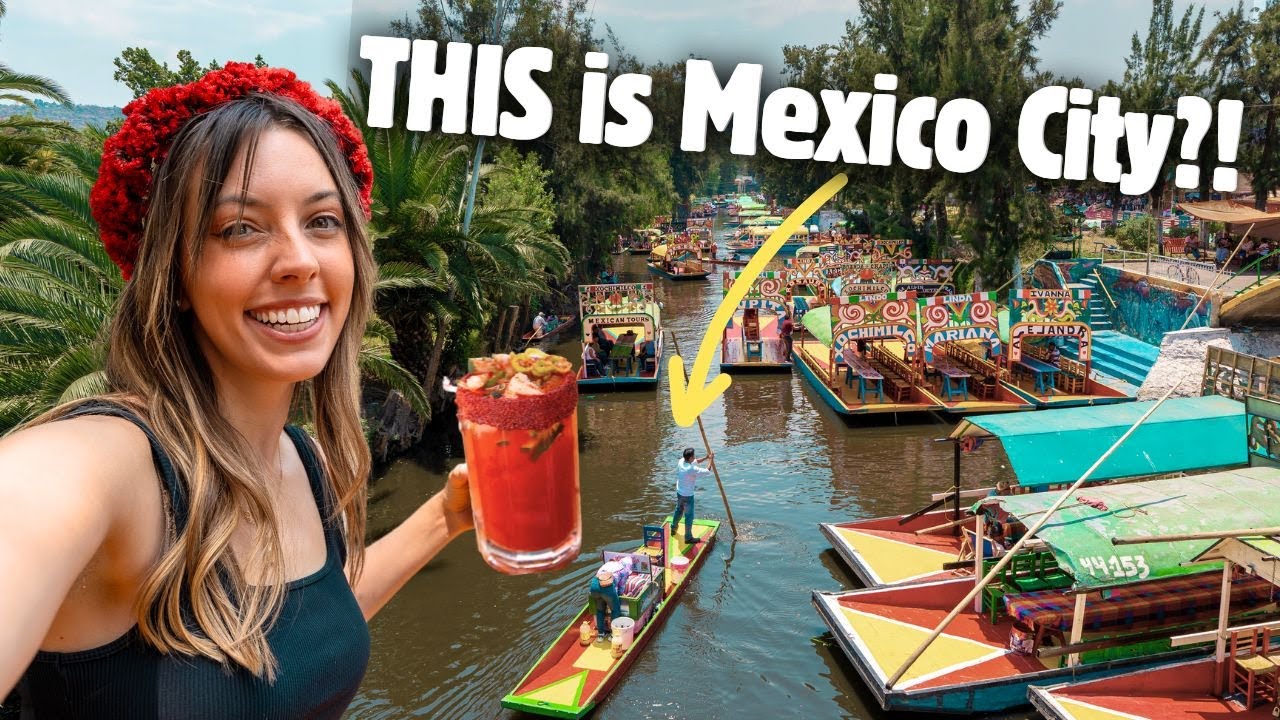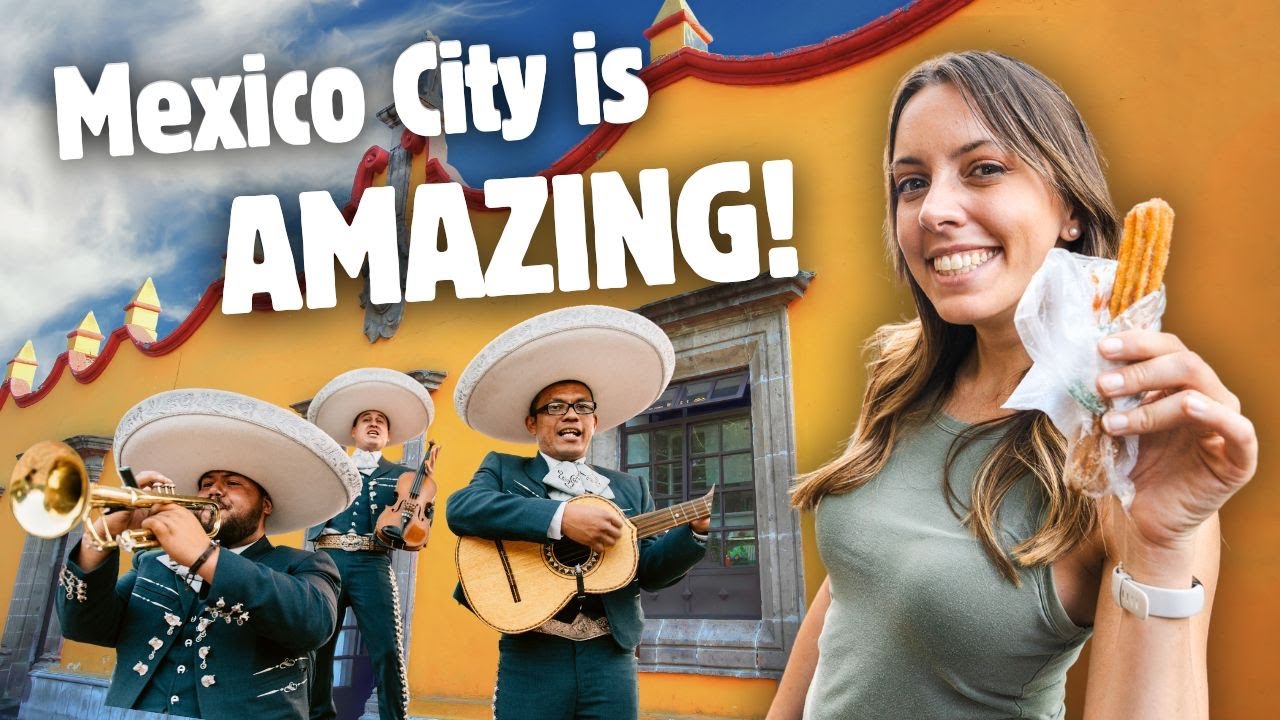TL;DR I fell in love with Biblioteca Vasconcelos the first time I walked under its forest of suspended shelves and into a garden of books. Designed by Alberto Kalach and opened in 2006, this 38–44k m² public library holds roughly 600,000 volumes, integrates botanical gardens and public art, and sits next to Buenavista station and the Tianguis del Chopo. In this guide I’ll share what to look for, how to get the best photos, practical arrival steps, and lesser-known spots I discovered during repeated visits—backed by official descriptions, architectural analysis, local reporting and visitor accounts.
Biblioteca Vasconcelos Mexico City: A Comprehensive Guide to Its Hidden Gems
Why I keep returning
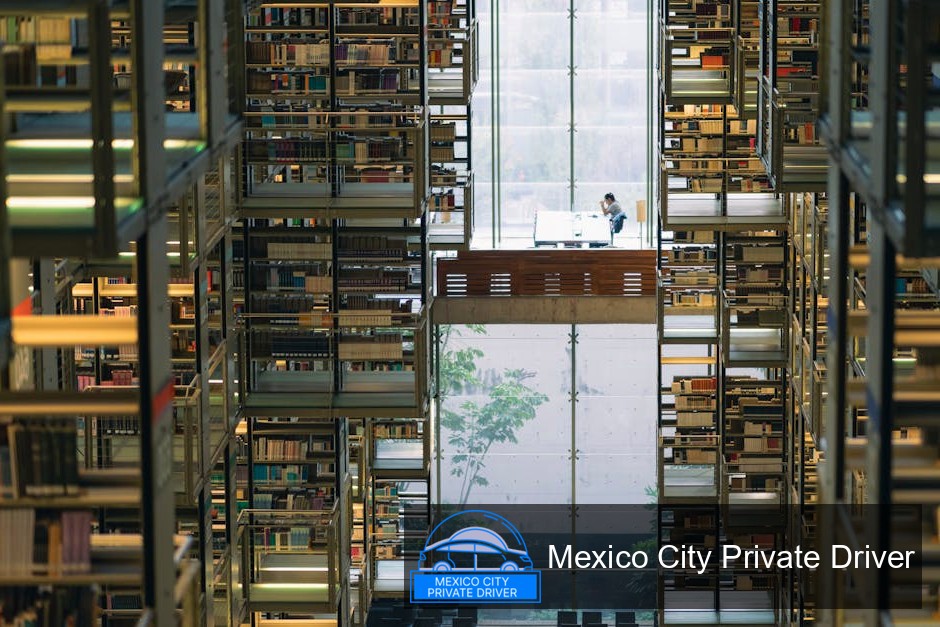
Libraries usually calm me; Biblioteca Vasconcelos astonishes me. The building reads equal parts museum, greenhouse and reading room. From the dramatic exterior—concrete, steel and glass—to the interior’s seemingly endless suspended bookcases, it’s an architectural and cultural statement. I return because it’s simultaneously a public resource and an urban experience: sunlight, plants, art and reading converge in a way few public libraries do.
Key facts at a glance
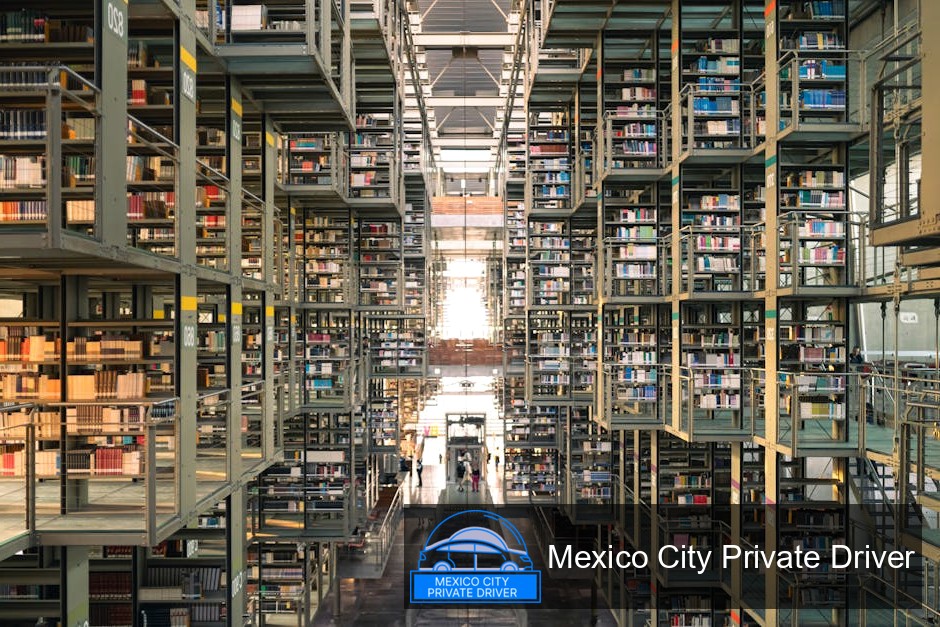
- Architects: Alberto Kalach (lead) and collaborators—project frequently cited in architectural sources.
- Opened: 2006 (with later repairs and full reopening after initial construction issues).
- Footprint: commonly reported between ~38,000 and 44,000 m² of building area; extensive outdoor green space attached.
- Collection: about 600,000 items including books, periodicals, audio-visual materials and Braille works.
- Location: Buenavista, adjacent to the Buenavista transit hub and the Tianguis Cultural del Chopo (Chopo market).
Architecture and design: what you shouldn’t miss
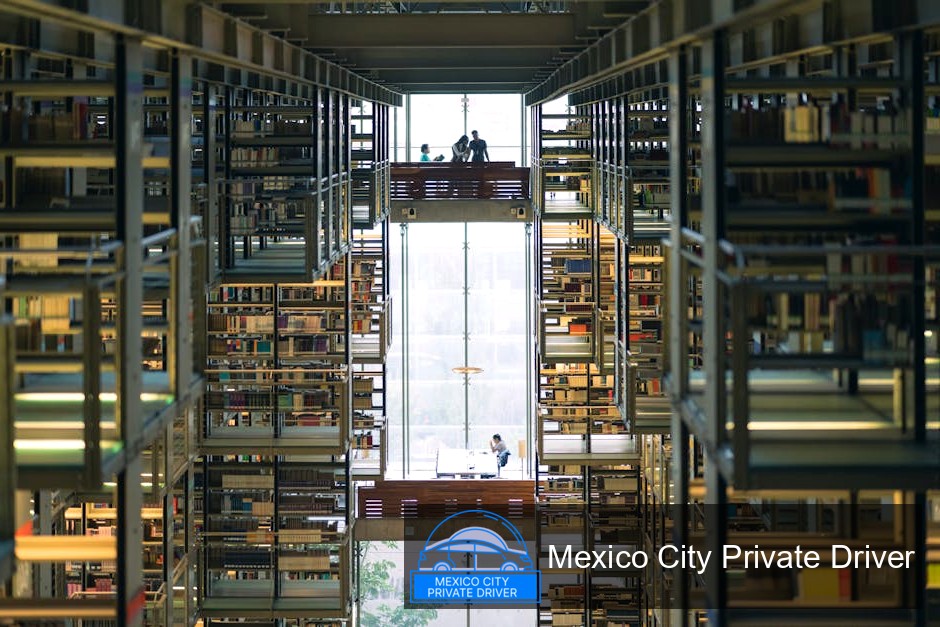
As someone who writes about places for a living, I judge public spaces by whether they invite people to stay. Vasconcelos succeeds because the design blends transparency, daylighting and vegetation so that the interior reads like a suspended forest.
Suspended shelves and the “infinite” perspective
The signature element—bookshelves that appear to hang and recede into mirrored perspectives—creates a layered, theatrical reading room. It’s not just dramatic for photographs; it changes how you navigate the stacks: you move around volumes in three dimensions.
Integration with gardens
The project was conceived to merge library functions with botany: green courtyards, water features and a greenhouse are intentionally part of the visitor experience. I often step from a cool, plant-lined corridor into bright reading terraces; ArchDaily and the official municipal descriptions highlight this public-garden integration.
Art and focal pieces
The library hosts standout artworks—most famously a major installation by Mexican artist Gabriel Orozco. These works punctuate the architecture, offering conversation between art and books rather than art as separate spectacle.
Hidden gems inside and around the building
Beyond the well-photographed central hall, here are the spots I discovered only after lingering.
- The greenhouse corners: Smaller plant rooms act as quiet microclimates. They’re ideal for reading when the main atrium is busy.
- Upper terraces: On clear days the terraces offer unusual vantage points where bookshelves align with sky and foliage, producing striking geometric compositions.
- Artist spaces and rotating exhibits: Temporary shows often occupy peripheral galleries. I’ve found emerging local artists’ work here—check the program calendar.
- Independent bookstore and kiosks: The on-site bookshop is a good place to pick up Spanish-language titles, prints and postcards related to the library’s architecture.
- Buenavista corridor: Walk out and you’re at a transport hub and within steps of the Tianguis del Chopo—perfect if you want to combine the visit with market browsing.
How Biblioteca Vasconcelos compares to other iconic libraries
| Feature | Biblioteca Vasconcelos | Typical large public library |
|---|---|---|
| Signature element | Suspended steel shelving + integrated garden | Stacked shelving, enclosed reading rooms |
| Collection size | ~600,000 items | Varies; many major city libraries exceed 1M |
| Architectural focus | Strong sculptural/landscape integration | Often more functional and archival |
| Accessibility | Public, adjacent to major transit hub | Also public but transit access varies |
| Atmosphere | Atrium-like, experiential, artistically curated | Quiet, functional, research-centered |
Practical Guide
Below are concrete steps and logistics so your visit is efficient and enjoyable—based on my visits and corroborated hours and descriptions from visitor and municipal sources. Always double-check the official website for last-minute changes.
Before you go
- Check the official Biblioteca Vasconcelos website for program schedules and any closures (I’ve seen exhibitions listed there and the municipal venue page confirms many practical details).
- Bring ID if you plan to register for services (borrowing/reading room registration may require it).
- Pack a small notebook and a lightweight jacket—some reading areas can be cool from airflow and plant microclimates.
Getting there (step-by-step)
- Take the Metro or suburban rail to Buenavista station—Vasconcelos sits adjacent to the transit hub. On foot, follow signs toward the library plaza.
- If arriving by car or rideshare, drop off points and street access are indicated near the main plaza. I prefer public transit because the area is a transport nexus.
- Enter through the main lobby; note that security checks are common in public buildings—arrive a few minutes early.
On arrival
- Start with the central atrium to orient yourself—the suspended shelves and central art piece are easiest to see from the ground level.
- Then walk the perimeter terraces and the greenhouse to experience the garden integration highlighted in architectural write-ups.
- If you want to borrow books, ask at the information desk about membership and borrowing rules; online sources indicate the library serves a large public catchment, so staff are used to guiding newcomers.
Best times to visit
- Weekday mornings are quieter for photography and reflection—visitor accounts and my visits reflect smoother access early in the day.
- Weekends can be lively, especially when the adjacent Tianguis del Chopo is active—combine both if you enjoy people-watching.
Photography, research and accessibility tips
I frequently photograph architecture for work, so I’ll share camera-friendly tips and accessibility notes.
- Photography: The central hall is a natural-light photographer’s dream. Use a wide lens for the atrium and a mid-telephoto for compressed perspectives; avoid flash around artwork and other readers.
- Research: If you’re using special collections, contact the library in advance. While the general collection is openly accessible, research items may require appointment or staff assistance.
- Accessibility: The building was designed with public access in mind and includes ramps and elevators; still, if you have specific mobility needs, email the library or call ahead for up-to-date accommodations.
Safety and neighborhood notes
Buenavista is a busy transit and commercial neighborhood. I always keep an eye on belongings in crowded areas and use common-sense precautions—store valuables in front pockets and avoid isolated streets at night. The library itself is a public, monitored facility and feels safe during opening hours.
What to combine with your visit
- Tianguis Cultural del Chopo: If you’re there on a Saturday, the Chopo market is a short walk away and offers records, subculture vendors and street energy.
- Buenavista transit hub: Great for connections—combine the library with other museums or neighborhoods across the city using rail or metro.
- Local cafés: After spending time inside the library, step outside to small cafés and food stalls that frequent the area for a quick bite.
My personal itinerary for a focused 2-hour visit
- Arrive early and enter the main atrium—spend 10–15 minutes photographing and absorbing the central composition.
- Head to the greenhouse and upper terraces—30 minutes wandering the plant-lined paths and quieter stacks.
- Visit the bookshop and any current exhibits—20–30 minutes.
- Use the reading terrace or a quiet reading room to sit and browse a book—20–30 minutes.
When things can go wrong (and what to do)
There have been well-documented early construction and maintenance controversies in the library’s history; after opening in 2006 it closed temporarily for repairs before reopening. Today the building is operational, but infrastructure work or program closures can still occur. If you encounter closed sections, ask staff for alternate routes or exhibits—they’re usually helpful and can suggest where to go next.
FAQs
Is Biblioteca Vasconcelos free to enter?
Yes—the library is a public institution and general entry to the building and reading areas is free. Fees may apply for certain workshops, special exhibitions, or borrowing privileges; confirm current rules at the information desk or official site.
What are the opening hours?
Hours fluctuate for events and maintenance, but many listings (including recent visitor sites) show typical opening hours from early morning until early evening. I recommend checking the library’s official website or calling ahead for today’s schedule.
Can I borrow books as a visitor from another city or country?
Borrowing policies vary. Local residents can usually register and borrow; visitors may be able to obtain temporary access or use on-site reading services. For international visitors planning to borrow, contact the library in advance—staff can explain ID requirements and lending rules.
Is photography allowed inside?
Photography for personal use is commonly permitted in the public areas, but flash and professional shoots may require permission. Artworks and reading patrons deserve respect—avoid flash near exhibits and always follow staff instructions.
Are there guided tours?
Guided tours are offered periodically, especially during special cultural programs. I’ve joined docent-led visits in the past; they add context about the architecture and artworks. Check the events calendar or ask staff on arrival.
How accessible is the library for people with reduced mobility?
The library was designed with accessibility features like elevators and ramps. However, specifics (e.g., accessible restrooms, seating, or assistance services) can change, so I advise contacting the library directly if you need detailed accommodations.
What art should I look for inside?
Look for major installations by Gabriel Orozco and rotating exhibitions in the peripheral galleries. These pieces are integrated with the stacks and atrium, so take time to move through different levels to experience them fully.
Is the surrounding neighborhood safe to explore?
Buenavista is a busy transit-oriented neighborhood. During daylight hours it’s lively and suitable for walking between the library, transit hub and markets. As with any large city area, use typical city safety precautions—avoid showing valuables and stay in well-trafficked areas at night.
Final thoughts
Biblioteca Vasconcelos is not just a repository of books; it’s an urban experiment in combining architecture, public green space and contemporary art. From a personal and professional perspective, it’s one of Mexico City’s most original civic spaces—equal parts refuge and spectacle. Whether you’re researching, photographing, or simply looking for a memorable public space to read, invest time to move beyond the central atrium: the greenhouse corners, terraces and rotating exhibitions are the hidden layers that kept me coming back.
If you want, I can create a printable 2-hour walking route or a photo-shotlist tailored to the time of day you plan to visit—tell me your arrival time and I’ll map it out.
Martin Weidemann is a digital transformation expert and entrepreneur with over 20 years of experience leading fintech and innovation projects. As a LinkedIn Top Voice in Digital Transformation and contributor to outlets like Forbes, he now brings that same expertise to travel and mobility in Mexico City through Mexico-City-Private-Driver.com. His focus: trustworthy service, local insights, and peace of mind for travelers.

